History GK From IAS Exam 1999:
1. Match List-I with List-II and select the correct answer using the codes given below the lists
| List-I (Books) | List-II (Authors) |
|---|---|
| (A) The First Indian War of Independence | (1) Rabindranath Tagore |
| (B) Anand Math | (2) Sir Aurbindo |
| (C) Life Divine | (3) Bankim Chandra Chatterji |
| (D) Sadhana | (4) Vinayak Damodar Savarkar |
Codes:
(A) A-4; B-3; C-2; D-1
(B) A-3; B-4; C-1; D-2
(C) A-4; B-3; C-1; D-2
(D) A-3; B-4; C-2; D-1
Ans: A-4; B-3; C-2; D-1 (A)
2. Match List-I with List-II and select the correct answer using the codes given below the lists
| List-I (Year) | List-II (Event) |
|---|---|
| (A) 1775 | (1) First Anglo-Burmese War |
| (B) 1780 | (2) First Anglo-Afghan War |
| (C) 1824 | (3) First Anglo-Maratha War |
| (D) 1838 | (4) Second Anglo-Mysore War |
Codes:
(A) A-4; B-3; C-2; D-1
(B) A-4; B-3; C-1; D-2
(C) A-3; B-4; C-1; D-2
(D) A-3; B-4; C-2; D-1
Ans: A-3; B-4; C-1; D-2 (C)
3. The most short-lived of all of Britain’s constitutional experiments in India was the
(A) Indian Council Act of 1861
(B) Indian Council Act of 1892
(C) Indian Council Act of 1909
(D) Government of India Act 1919
Ans: Indian Council Act of 1909 (C)
4. Which one of the following leaders of Congress was totally in favor of the Cabinet Mission Plan?
(A) Mahatma Gandhi
(B) Jawaharlal Nehru
(C) Sardar Patel
(D) Maulana Abul Kalam Azad
Ans: Sardar Patel (C)
5. Which one of the following Indian leaders was dismissed by the British from the Indian Civil Services?
(A) Satyendranath Tagore
(B) Surendranath Banerji
(C) R.C. Dutt
(D) Subhash Chandra Bose
Ans: Surendranath Banerji (B)
6. The term “imperial preference” was applied to the
(A) special privileges on British imports in India
(B) racial discrimination by the Britishers
(C) subordination of Indian interest to that of the British
(D) preference is given to British political agents over Indian Princes
Ans: special privileges on British imports in India (A)
7. The paintings of Abanindranath Tagore are classified as
(A) realistic
(B) socialistic
(C) revivalistic
(D) impressionistic
Ans: revivalistic (C)
8. There was no independent development of industries in India during British rule because of the
(A) absence of heavy industries
(B) scarcity of foreign capital
(C) scarcity of natural resources
(D) preference of the rich to invest in land
Ans: absence of heavy industries (A)
9. At a time when empires in Europe were crumbling before the might of Napoleon, which one of the following Governors-General kept the British flag flying high in India?
(A) Warren Hastings
(B) Lord Cornwallis
(C) Lord Wellesley
(D) Lord Hastings
Ans: Lord Hastings (D)
10. The Governor-General who followed a spirited “Forward” policy towards Afghanistan was
(A) Minto
(B) Dufferin
(C) Elgin
(D) Lytton
Ans: Lytton (D)
11. ‘Abhinav Bharat’ a secret society of revolutionaries was organized by
(A) Khudiram Bose
(B) V.D. Savarkar
(C) Prafulla Chaki
(D) Bhagat Singh
Ans: V.D. Savarkar (B)
12. Which Indian nationalist leader looked upon a war between Germany and Britian as a God-sent opportunity which would enable Indians to exploit the situation to their advantage?
(A) C. Rajagopalachari
(B) M.A. Jinnah
(C) Subhash Chandra Bose
(D) Jawaharlal Nehru
Ans: Subhash Chandra Bose (C)
13. The first venture of Gandhi in all-India politics was the
(A) Non-Cooperation Movement
(B) Rowlatt Satyagraha
(C) Champaran Movement
(D) Dandi March
Ans: Rowlatt Satyagraha (B)
14. ‘It made its proposal in May. It still wanted a united India. There was to be a Federal Union composed of British provinces’
The above equation is related to:
(A) Simon Commission
(B) Gandhi-Irwin Pact
(C) Cripps Mission
(D) Cabinet Mission
Ans: Cabinet Mission (D)
15. The Congress policy of pray and petition ultimately came to an end under the guidance of
(A) Aurobindo Ghosh
(B) Bal Gangadhar Tilak
(C) Lala Lajpat Rai
(D) Mahatma Gandhi
Ans: Bal Gangadhar Tilak (B)
16. Match List-I with List-II and select the correct answer using the codes given below the lists
| List-I | List-II |
|---|---|
| (A) Shyamji Krishna Varma | (1) Bande Mataram |
| (B) Madame Bhikaji Cama | (2) Indian Sociologist |
| (C) Annie Besant | (3) The Talwar |
| (D) Aurbindo Gosh | (4) Commonwealth |
Codes:
(A) A-2; B-3; C-4; D-1
(B) A-3; B-2; C-1; D-4
(C) A-2; B-3; C-1; D-4
(D) A-3; B-2; C-4; D-1
Ans: A-2; B-3; C-4; D-1 (A)
17. Which one of the following statements is not correct?
(A) ‘Neel Darpan’ was a play based on the exploitation of the Indigo farmers
(B) The author of the play ‘Ghashiram Kotwal’s is Vijay Tendulkar
(C) The play ‘Navann’ by Nabin Chandra Das was based on the famine of Bengal
(D) Urdu theatre used to depend heavily on Parsi theatre
Ans: The play ‘Navann’ by Nabin Chandra Das was based on the famine of Bengal (C)
18. The first writer to use Urdu as the medium of poetic expression was
(A) Amir Khusrau
(B) Mirza Ghalib
(C) Bahadur Shah Zafar
(D) Faiz
Ans: Amir Khusrau (A)
19. One consistent feature found in the history of southern India was the growth of small regional kingdoms rather than large empires because of
(A) absence of minerals like iron
(B) too many divisions in the social structure
(C) absence of vast areas of fertile land
(D) scarcity of manpower
Ans: absence of vast areas of fertile land (C)
20. ‘The king was freed from his people and they from their king’. On whose death did Badauni comment thus?
(A) Balban
(B) Ala-ud-din-khalji
(C) Muhammad-bin-Tughlaq
(D) Firoz Shah Tughlaq
Ans: Muhammad-bin-Tughlaq (C)
21. Which one of the following pairs is not correctly matched?
(A) Jahangir: William Hawkins
(B) Akbar: Sir Thomas Roe
(C) Shahjahan: Travernier
(D) Aurangzeb: Manucci
Ans: Akbar: Sir Thomas Roe (B)
22. Consider the following statements:
The striking feature of the Jama Masjid in Kashmir completed by Zain-ul-Abdin includes
(1) turret
(2) similarity with Buddhist pagodas
(3) Persian style
Which of the above statement is/are correct?
(A) 1 alone
(B) 1, 2 and 3
(C) 2 and 3
(D) 1 and 3
Ans: 1, 2 and 3 (B)
23. The following persons came to India at one time or another
(1) Fa-Hien
(2) I-Tsing
(3) Megasthanese
(4) Hieun-Tsang
The correct chronological sequence of their visits is
(A) 3, 1, 2, 4
(B) 3, 1, 4, 2
(C) 1, 3, 2, 4
(D) 1, 3, 4, 2
Ans: 3, 1, 4, 2 (B)
24. Which one of the following was initially the most powerful city-state of India in the 6th century B.C.?
(A) Gandhar
(B) Kamboj
(C) Kashi
(D) Magadh
Ans: Magadh (D)
25. The term ‘Aryan’ denotes
(A) an ethnic group
(B) a nomadic people
(C) a speech group
(D) a superior race
Ans: a speech group (C)
26. From the third century A.D. when the Hun invasion ended the Roman Empire, the Indian merchants relied more and more on the
(A) African trade
(B) West-European trade
(C) South-East Asian trade
(D) Middle-Eastern trade
Ans: South-East Asian trade (C)
27. The Indo-Laws kingdom set up in northern Afghanistan at the beginning of the second century B.C. was
(A) Bactria
(B) Scythia
(C) Zedrasia
(D) Aria
Ans: Sumant (D)
28. Which one of the following ports handled the North Indian trade during the Gupta period?
(A) Tamralipti
(B) Broach
(C) Kalyan
(D) Cambray
Ans: Tamralipti (A)
- Latitude and Longitude
- Solar System
- Atmosphere and its Structure
- Structure of the Earth
- Volcanoes and Rocks
- Humidity: Absolute, Specific & Relative Humidity
- Important Warm and Cold Winds
- Cloud Formation And Types of Clouds
- Ecosystem
- Ecological Pyramids and its Types
- Ecological Succession or Biotic Succession
- Important Biogeochemical Cycles
- Global Warming: Effects and Control Measures
- Disaster Management
- Physiography Of India
- Rivers of India
- Download Evolution of state in India NIOS Book For IAS Exam

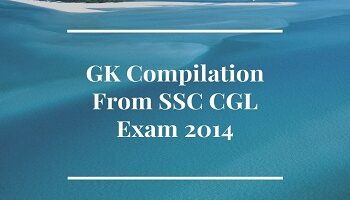
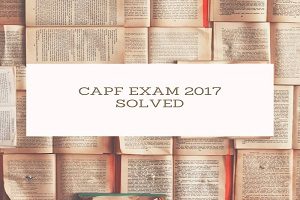
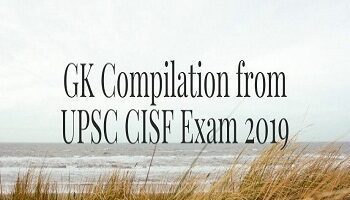
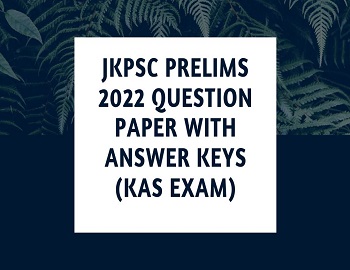
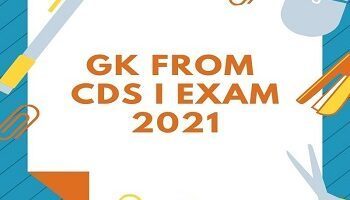

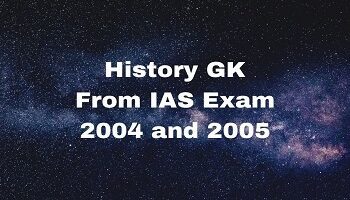

Comments (No)